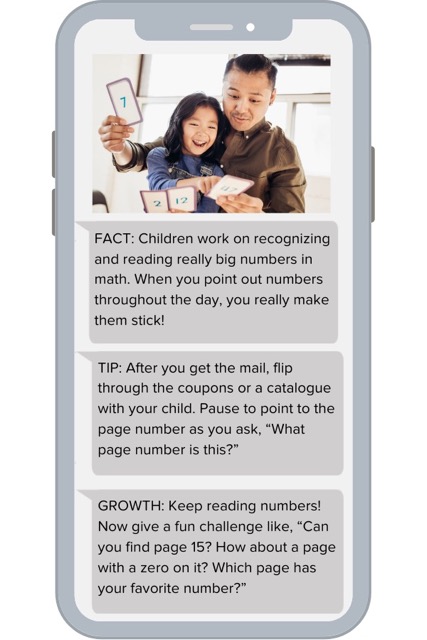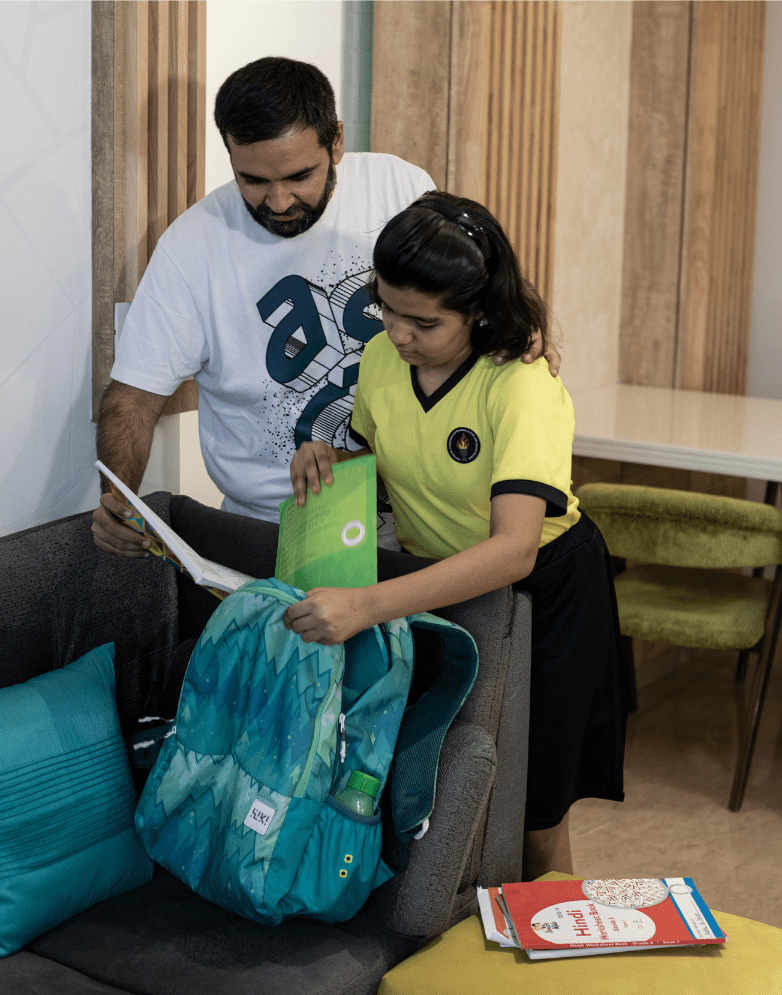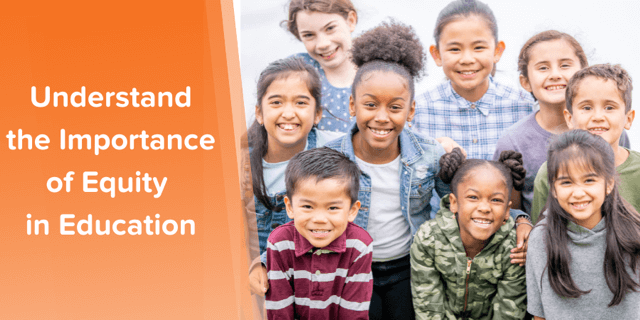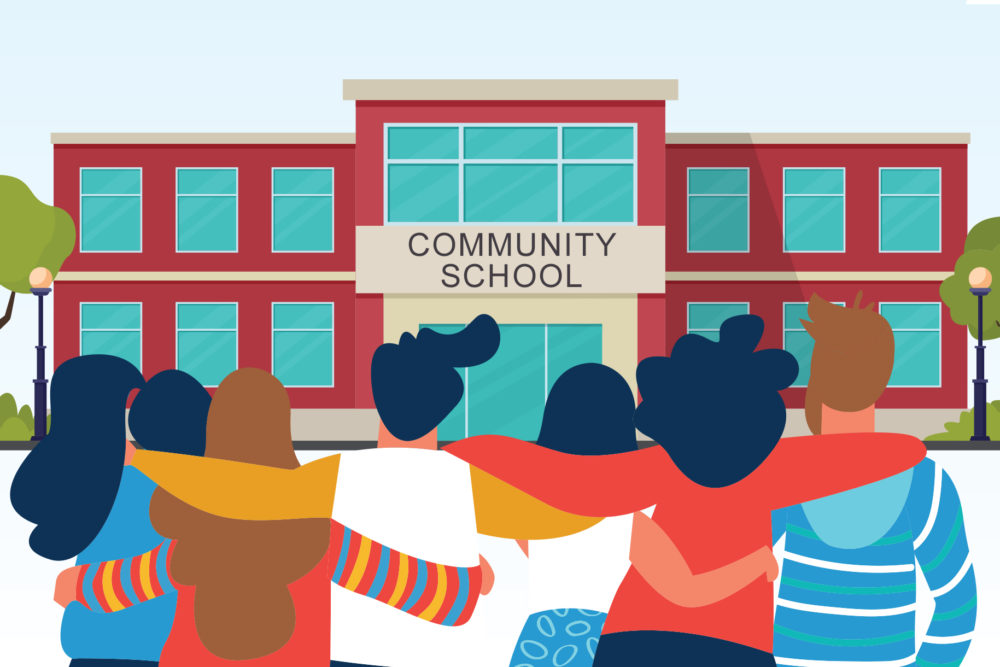by ParentPowered contributing author Curran Mahowald, M.A. Cognitive Science in Education
As an educator, you are committed to creating a quality learning environment for the students you serve. You want all your students to receive a high-quality education, and that means dedicating your efforts to crafting awesome lesson plans, meaningful assignments, and authentic relationships with students. You may even think about the science of reading and other evidence-based practices to help encourage students to reach their educational goals.
And if you’re reading this article, you’re also probably curious about why the importance of equity in education keeps surfacing. Why spend valuable time and resources talking about educational equity when you’re already working hard to provide a high-quality learning experience to every student who walks through your door?
To understand one way in which our default ways of seeing outcomes might not be enough to discover the root of success and failure, let’s travel back in time to World War II.
The importance of equity in education: helping all students take flight
The Center for Naval Analysis noticed that many bombers were being shot down over Germany. They set out to find vulnerabilities and improve protection in these planes. They looked at all the bombers that returned to base and noticed that the majority of the bullet holes were in the wings and body of the plane. In response, they reinforced these areas of the plane.
However, this did not solve the problem; many planes were still getting shot down. The reason their analysis didn’t find the real issue, as Hungarian-Jewish statistician Abraham Wald pointed out, was that it only included the planes that returned to base and ignored those that had been shot down. The damage sustained by the planes they studied was actually not critical damage, by definition!
Further analysis showed that the cockpit, engines, and tail were actually the most vulnerable, despite surviving bombers having the least damage in those areas. This analysis led to a change in focus to reinforce those areas and ultimately resulted in fewer fatalities and greater success in bombing missions.
This story illustrates survivor bias, where only looking at the data of those who succeed and excluding those who fail can lead to flawed conclusions. It highlights the importance of considering missing data and not just focusing on what’s working when trying to solve a problem.
When it comes to educational equity, it’s easy to look at a program, policy, or practice that seems to be working well for most students and decide to continue it. True equity in education often requires taking a special interest in those students for whom it’s not working, figuring out why, and changing course to ensure all students can take flight. And this is the importance of promoting equity in any educational system.

High-quality instruction and evidence-based practices are certainly important. However, implementing these without a specific focus on equity will not be sufficient to address the root causes of educational inequities, eliminate race- and income-based disparities in learner outcomes, promote diversity, and ensure that all students can access and benefit from learning opportunities.
Equity and student outcomes go hand in hand. To further understand the importance of equity in the education system, let’s look at five equitable practices and what the research says about how they drive student outcomes.

1. Equity through diversity and representation in school staffing
A diverse team of educators that reflects the student body they serve is a key component in creating more inclusive and equitable schools that meet the needs of all students.
How does it help students?
When students have teachers who come from similar backgrounds or who share their cultural identity, they may feel more comfortable and supported in their classrooms and learning environments. In addition, schools with diverse faculty have a better understanding of the cultural backgrounds and experiences of their students. This can help the school to create a more culturally responsive educational experience that is welcoming and inclusive of all students.
When students see people like themselves in positions of authority, they may be more likely to aspire to similar careers and feel a sense of belonging in academic settings, paving the way for a next generation of learners and leaders.

A 2017 study in North Carolina found that Black students with at least one Black teacher in grades K-3 are more likely to graduate and enroll in college than those who did not have a Black teacher during that time.
What does it look like in practice?
Increasing diversity in the school workforce means hiring individuals who bring a wide range of perspectives to the school community and represent the population they are serving. This includes hiring teachers and staff of color, teachers who are bilingual or multilingual, teachers with disabilities, and teachers with different backgrounds in education or professional experiences.
All staff benefit from professional development focused on cultural competency and inclusive practices in the classroom. This can include workshops or training sessions on topics such as culturally responsive teaching and trauma-informed practices.
2. Equity through diversity and representation in curriculum
Diversity and representation in curriculum are vital components that play a pivotal role in achieving equity in education. This concept refers to the deliberate inclusion of a wide array of perspectives, experiences, and identities in the materials, content, and activities used in educational settings.
How does it help students?
As an author from the Fordham Institute puts it, “Culturally responsive curricula would work to intervene and directly address issues tied to race, such as stereotype threat, by providing an opportunity for students to dig deep into the multiplicity of the American experience.”
A 2016 study in San Francisco high schools found that culturally responsive curricula, or ethnic studies, had a significant impact on at-risk minority students. Incoming high school freshmen who were at risk of dropping out took an ethnic studies course and saw a 1.4 grade-point increase in cumulative GPA and a 21% increase in attendance.

They also earned more credits compared to their peers just beyond the program’s threshold for inclusion. The course also included service-learning projects in which students engaged with their community and family history.
Content and assignments that are relevant to students’ authentic identities not only enrich their educational experiences but also contribute to achieving equity by increasing their engagement and motivation to learn.
What does it look like in practice?
Teachers of all ages and subjects can promote equity through diversity and representation in what they teach. For example, English and literature courses should include books written by authors from diverse backgrounds. In history and social studies, teachers can cover the experiences of indigenous peoples, enslaved peoples, women, and LGBTQ+ people throughout history, as well as teaching about celebrations and customs from different cultures. In STEM subjects, the contributions of women, people of color, and people with disabilities should be highlighted.

3. Equity through trauma-informed practices
Taking a trauma-informed lens to serving children and families means providing care that is designed to recognize and respond to the effects of adversity and trauma.
How do they help students?
Trauma can make it more challenging for students to concentrate, regulate their emotions, and engage in learning. By creating safe and supportive learning environments, trauma-informed education systems can help students feel more connected to school and improve their academic performance. In the same way, it can help reduce disciplinary issues and improve the school environment and climate for all students.
Trauma-informed education also helps mitigate the impacts of trauma on emotional well-being by providing students with the tools and resources they need to cope with their trauma and build resilience. Research has shown that trauma-informed education can lead to improved social and emotional well-being for young people.
In a survey of families receiving a trauma-informed parenting curriculum from ParentPowered, more than 90% reported that being part of the program helped their children learn and grow.
What do they look like in practice?
Trauma-informed practices aim to create a safe and supportive environment for individuals who have experienced trauma, while also promoting healing and recovery.
Educators need to be aware of the ways in which trauma can impact students’ learning and development. This includes understanding how trauma can affect classroom behavior, learning, and relationships, and adapting teaching methods accordingly.

When it comes to building resilience to thrive despite adversity, educators, families, and students can all benefit from self-care — intentionally protecting your own happiness and well-being, especially during times of stress. This includes nurturing healthy relationships and seeking support when needed.
Creating a safe and trusting learning environment is a critical principle of trauma-informed teaching strategies. This involves establishing clear expectations and boundaries, building relationships based on trust, and creating an atmosphere where students feel safe to share their experiences.
Trauma-informed teaching involves collaboration and coordination among school staff and mental health professionals. This includes working together to identify students who may need additional support, sharing information to provide a comprehensive understanding of the student’s needs, and developing plans to support the student’s emotional and academic success.

4. Equity through community schools
Community schools are a type of public school that operates as a hub for the community. They aim to provide comprehensive education and support services and resources to students, families, and others beyond the school community.
How do they help students?
Anthony S. Bryk and colleagues’ 2010 report on 200 Chicago public schools describes five key components for helping students reach their academic potential: “strong school-parent-community ties; enhanced professional capacity; a student-centered learning climate; a coherent instructional system; and leadership that drives change and enlists teachers, families, and community members to help expand the reach of the work and share overall responsibility for improvement.”
It’s not difficult to imagine how combining essential supports for learning into one easily accessible hub could help individual students. But research also shows positive outcomes of community schools for students on aggregate.
The RAND corporation’s assessment of the New York City Community Schools initiative found that the program had positive impacts in many areas, including attendance, on-time grade progression, math achievement, and a sense of connectedness to adults and peers.
The community schools approach has the potential to close the achievement gap by connecting students and their families with resources to meet basic needs and help them achieve their academic goals. The Learning Policy Institute examined the community schools approach as a whole and part-by-part for evidence of effectiveness. They found that each of the four pillars — integrated student supports, expanded learning time and opportunities, family and community engagement, and collaborative school leadership and practices — meet the ESSA standard for an evidence-based school improvement strategy. Indeed, “the longer a community school has been operating, and the more services a student receives, the better the outcome” (LPI report).
What do they look like in practice?
Research has shown that wellness, family stability, caregiver involvement in education, and enriching after-school educational opportunities for students are important factors in student learning. Community schools were created so that schools could extend their capacity to provide additional resources to support students.
In a community school, the school building is used as a center for community activities beyond traditional school hours. The school partners with local organizations to provide access to services such as health care, mental health counseling, after-school programs, and adult education. By doing so, community schools seek to address the non-academic needs of students and families. Promoting equitable access to resources can impact educational outcomes.

Community schools often have a focus on parent and community engagement, with the belief that involving families and community members in the education process can have a positive impact on student success.
5. Equity through family engagement
Parents are children’s first teachers, and children benefit when all the caring adults in their lives work together to create effective support systems for their learning. Family engagement is a meaningful collaboration between families and education systems in supporting students’ learning and growth.
How does it help students?
The positive effects of family engagement in schools on academic outcomes are supported by more than 40 years of research. Several studies conducted by Joyce Epstein and her colleagues at Johns Hopkins University, as well as Anne Henderson and her colleagues at the Center for Law and Education, have found that parental involvement in children’s education is crucial in promoting academic achievement. The studies suggest that when parents consistently support, monitor, and advocate for their children’s education, their children are more likely to succeed in school.
School leaders have often found it more difficult to forge a connection with families belonging to certain demographic groups, such as low-income families, newcomer families, and families who speak languages other than English. Family engagement initiatives designed especially with these traditionally “hard-to-reach” groups in mind can help close equity gaps.
For example, ParentPowered’s family engagement programs leverage powerful digital tools to break down the complexity of parenting into bite-sized pieces through high-quality, research-based information sent via weekly text messages. Children whose parents received text messages from the original Ready4K Approach, on which ParentPowered programs are based, scored higher on PALS, an early literacy measure.

What does it look like in practice?
Research indicates that children’s academic success depends not only on what occurs at school, but also on what occurs at home. A 2011 analysis by Konstantopoulos and Borman showed that students’ experiences with family and in the home account for more of the variation in academic achievement than school factors.
Because a family’s culture informs their beliefs and actions around involvement in a child’s education, culturally responsive family engagement is key to building trust and authentic partnerships in any school district. Equity in education requires all cultural backgrounds to be valued equally, and the backgrounds of parents and other family members are no exception.

Family engagement takes different forms for each school or program, because it is responsive to the needs and strengths of the learning community. In addition, because family engagement is a dynamic relationship focused on educational achievement objectives, it is not reduced to one activity or program.
Take a look at this research round-up for more inspiration to equitably boost success through family engagement.

Equity unlocks positive outcomes for all students
Equity in education doesn’t guarantee that all students will achieve equally well, but it does mean that differences in achievement won’t depend on the color of students’ skin or how much money their parents make. As the authors of a 2018 publication from the OECD put it, “Equity does not mean that all students obtain equal education outcomes, but rather that differences in students’ outcomes are unrelated to their background or to economic and social circumstances over which the students have no control.” Thus, the importance of equity in education is no less than giving students back control or agency in shaping their own destinies.
Educators who advance equitable practices such as diversity and representation in staffing and curriculum, trauma-informed programming, and meaningful family engagement are not only improving learner outcomes but also building a world in which every child has a chance to reach their full potential.

About the Author
Curran Mahowald is a former high school language teacher turned education research advocate. In addition to having worked at ParentPowered, she has also designed parent-facing informational materials at Oakland Unified School District and currently works on improving national research-to-practice infrastructure at the Annenberg Institute for School Reform at Brown University. Curran holds an M.A. in Cognitive Science in Education from Teachers College, Columbia University and B.A.s in Linguistics and French from the University of Southern California. Connect with her on LinkedIn.







